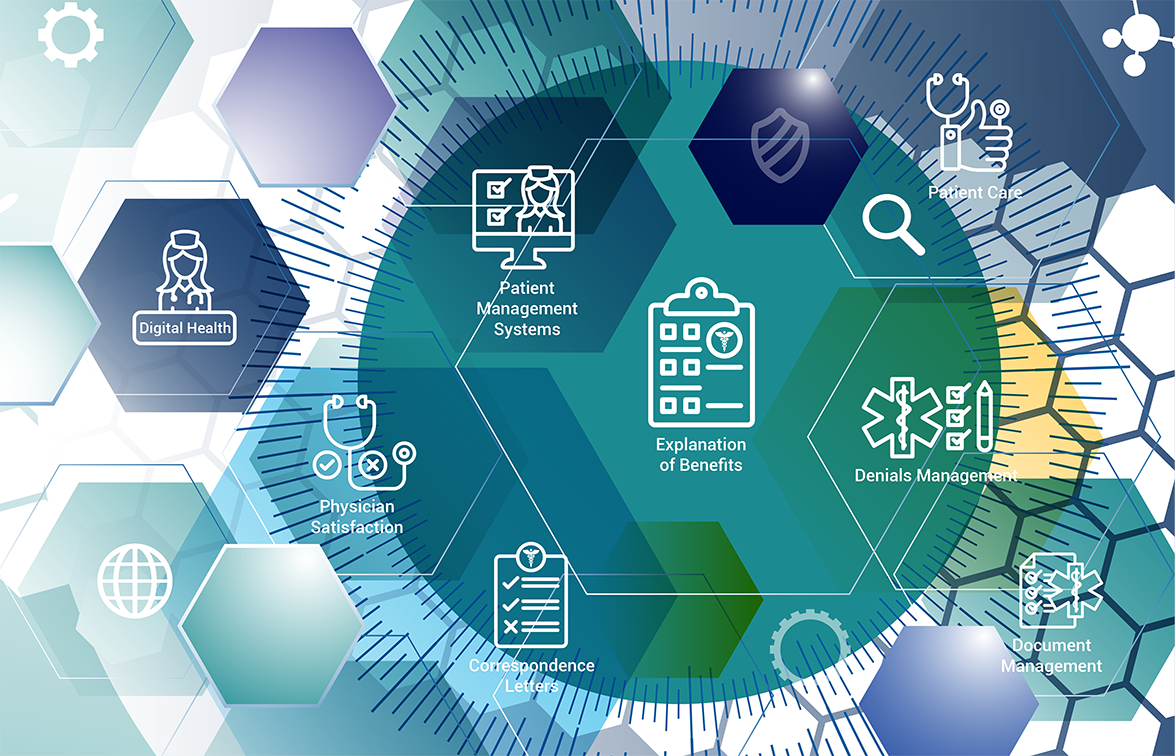Revenue Cycle Management (RCM) is the process of determining, tracking, and collecting revenue from patients. It begins at the initial encounter (appointment) and continues until the resolution of outstanding balances. The RCM process also includes coding activities and administrative functions such as the billing process.
There is an inherent need in today’s RCM -- streamlining inefficient processes, many which are paper-based, into completely electronified documents which eliminate the need for manual review, data entry, and manual posting! Although digitization and electronification continues to grow across the revenue cycle, many paper and PDF documents still remain requiring manual review, data entry, and posting. EOBs/EOPs and correspondence letters are two such documents.
The following Unique Case Studies of Platform Modernization provides an overview on how OrboGraph solutions are deployed across a wide range of RCM payment aggregators, banks providing medical lockbox services, and clearinghouses.
Technology Translates into Business Value
All modules of OrboAccess reside on OrboGraph’s Healthcare Payment Automation Center (HPAC). A cloud- based infrastructure, the HPAC platform enables connectivity with any revenue cycle corporation.
Through electronification, revenue cycle servicers reduce costs while providing their healthcare provider clients with the solutions that improve AR collections, reduce receivables, improve quality of posting and support better access to patient data upon demand to resolve billing issues. Additionally, both administrative and clinical data is available to feed downstream business intelligence (BI) and data analytics systems for more detailed financial analysis of trends. By upgrading from legacy systems with heavy human intervention and outdated processes, RCM companies modernize their existing platform.
Case Study: RCM Companies
Client Profile #1: A Cloud-Based EHR & RCM Service Provider
This organization had struggled with their existing offshore BPO vendor. This vendor provided paper EOB conversion to 835 management for over 10 years via the use of an extensive data entry network of keyers. The RCM Cloud Servicer realized a need to automate and address operational gaps including: process visibility, cost, reliability, process controls, and posting errors — an ongoing problem for healthcare providers and their patients.
After extracting all data from the EOB via AI technology, customization logic was created to translate metadata into customized EDI 835 formats for individual practice management systems for select healthcare providers. As part of this process, Access EOB converts proprietary adjustment codes read from the EOBs/EOPs into specific ANSI adjustment codes.
During initial quality benchmarking, OrboGraph committed to major quality improvements. We anticipate postability to be 99% — significantly higher than the BPO vendor. The RCM company will also see significant benefits to their downstream workflows and analytics.

Client Profile #2: A US-based Healthcare Payments BPO
This BPO company needed an automated infrastructure tool within their daily business processes that could lift data from EOB images. They had struggled to build a platform with internal technology. As a result, they were managing a large, offshore workforce with very manual and laborious controls finding it tough to maintain consistent output quality. Additionally, international labor rates were increasing, which drove up internal costs and reduced already slim margins — coupled with a competitive labor pool that was becoming more difficult to scale. The decision to build vs. buy came to the forefront after two years of analysis.
The company connected to OrboAccess and HPAC in a hybrid deployment, leveraging the OrbNet AI technology as an automation platform to automate manual processes and leverage the business intelligence capabilities of the system. Additionally, individual operator metrics were now trackable and better managed by the operations team.
OrboAccess implementation was highly successful. The flexibility of the OrboGraph platform has allowed this company to not only address their own automation issues, but also to scale operations for multiple new clients. They have established a strategic partnership with OrboGraph and are looking for other ways to collaborate.

Client Profile #3: A Traditional RCM Outsourcer
This organization struggled with internal EOB data entry processes that strained their U.S.-based labor force. Complex and customized client requirements had to be managed side by side with handling large amounts of paper EOBs. Correspondence letters were lost in the shuffle and often ignored.
EOB processing is no longer being done manually. The RCM Outsources leverages Orbo-Access for technology-based auto-posting, avoids duplicate posting of 835s and EOBs and has revamped internal data entry workflows for correspondence letters. Results: Refreshed Archive and Search.
Today, they’ve connected their once paper-based processes to their electronic denials system and are highly satisfied with their new archiving and search capabilities. They use OrboGraph 835s to feed into denial tools., providing a full scope of payments and trends.





